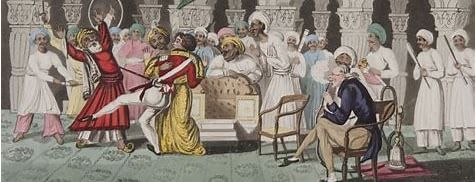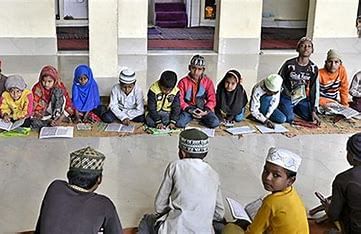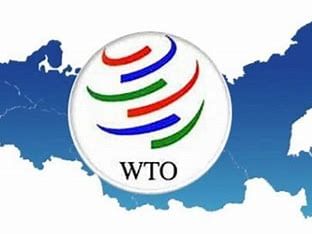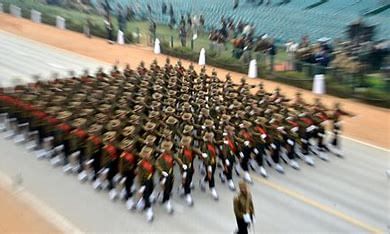UPSC Daily Current Affairs- 9th April 2024 | Current Affairs & Hindu Analysis: Daily, Weekly & Monthly PDF Download
GS-I
High Suicide Rate Among Indian Youths
Subject: Social Issues

Why in News?
Suicide among young individuals poses a significant public health concern in India, impacting families, communities, the economy, and the nation's future.
Data Insights
- India holds the unfortunate distinction of recording the highest number of suicides globally, with 1.71 lakh reported cases in 2022, translating to a rate of 12.4 per 1,00,000 individuals.
- Alarmingly, 41% of all suicides involve individuals under 30 years old, indicating a distressing frequency of youth suicides, with one occurring every 8 minutes.
- Notably, suicide stands as the primary cause of death among young women in India.
Factors Contributing to Youth Suicides
- Youth suicides in India stem from a complex interplay of biological, psychological, familial, and socio-cultural elements.
- Mental health issues represent a prominent risk factor, accounting for 54% of cases, while pressures from competitive exams, parental expectations, academic stress, and substance abuse also contribute significantly.
Sociocultural Influences on Young Women
- Factors such as early and arranged marriages, young motherhood, limited social standing, domestic abuse, and financial reliance play pivotal roles in driving suicide rates among young girls and women.
Impact of Media and Social Media
- The surge in internet usage among youth over the past two decades has heightened the influence of media on vulnerable individuals.
- Sensationalized reporting of suicides, especially those involving celebrities, has been linked to increased suicidal tendencies among young people.
Preventive Measures
- Efforts to prevent youth suicides in India include providing problem-solving skills to young individuals, early identification of mental health issues, and promoting a balanced lifestyle, including responsible internet use.
- Necessary reforms in education, such as alternative assessment methods, alongside societal changes to combat stigma and discrimination, are imperative.
National Suicide Prevention Strategy
- The Ministry of Health & Family Welfare initiated the National Suicide Prevention Strategy in 2022 with the goal of reducing suicide rates by 10% by 2030.
- The strategy emphasizes leveraging educational institutions, youth clubs, and school health ambassadors to enhance mental health awareness and combat substance and behavioral addictions.
Source: The Hindu
Insights from History: Coalition Governments in Colonial India
Subject: Modern History
Why in News?
Recent suggestions by the Prime Minister highlighted a connection between the Congress manifesto and the Muslim League, sparking political discussions.
- Critics countered by recalling coalition governments formed by the Hindu Mahasabha in Bengal, Sindh, and the North-West Frontier Province (NWFP) in the 1940s with the Muslim League.
Ideological Alignment and Political Alliances
- Dr. B.R. Ambedkar observed ideological parallels between the Hindu Mahasabha and the Muslim League, both proponents of the two-nation theory.
- These ideological similarities led to brief political collaborations, especially amidst the chaos following Congress's withdrawal from provincial ministries in 1939.
Reasons for such Alliance
- Opposition to Quit India Movement: The Muslim League and Hindu Mahasabha abstained from the Quit India Movement initiated by Mahatma Gandhi in 1942, choosing to back the British war endeavors.
- Support for British War Efforts: Savarkar, through a letter, directed Mahasabha members to uphold their positions and stay clear of the movement, while Syama Prasad Mookerjee assured backing to quell any internal disruptions.
- Increased Advocacy for Partition: Concurrently, Jinnah intensified his push for Pakistan, leveraging the absence of Congress leaders and positioning himself as the primary voice for Muslims.
Implications of this Coalition
- Following Congress's involvement in the Quit India Movement, the influence of the Muslim League surged, leading to the establishment of League ministries in multiple provinces by 1943.
- Jinnah's strategic maneuver to exploit Congress's absence bolstered his status as the exclusive representative of Indian Muslims, fueling the demand for Pakistan.
Source: The Quint
GS-II
Predicate Offence
Subject: Polity and Governance
Why in News?
The Supreme Court recently dismissed a money laundering case citing the absence of a predicate offence and proceeds of crime.
About Predicate Offence:
- A predicate offence is a foundational criminal act within a more elaborate criminal operation, often linked to money laundering or organized crime.
- It typically represents the initial illegal activity that generates funds for further unlawful actions.
- The term "predicate offence" is commonly associated with money laundering or terrorist financing endeavors.
Predicate Offence under the Prevention of Money Laundering Act (PMLA):
- The legislative objective behind predicate offences under the PMLA aims to combat not only unlawfully acquired wealth but also income that is legally obtained yet hidden from authorities.
Classification of Predicate Offences:
- Part A: Includes offenses under the Indian Penal Code (IPC) identified as predicate offences, such as criminal conspiracy, counterfeiting, robbery, forgery, and more.
- Part B: Encompasses offenses under the Customs Act considered as predicate offences if their value exceeds one crore rupees, focusing on customs duty and regulation violations.
- Part C: Consists of offenses with cross-border implications, covering Part A offenses and those against property as per Chapter XVII of the Indian Penal Code. It also includes the intentional evasion of taxes, penalties, or interest under the Black Money (Undisclosed Foreign Income and Assets) and Imposition of Tax Act, 2015.
- Supreme Court's Ruling: The Supreme Court emphasized that the absence of a predicate offence implies the absence of proceeds of crime, thereby precluding the possibility of money laundering.
Source: Times of India
Madrasas in Uttar Pradesh
Subject: Polity and Governance

Why in News?
Recently, the Supreme Court stayed a ruling of the Allahabad High Court on the U.P. Board of Madrasa Education Act 2004, citing a violation of Fundamental Rights.
- Earlier, the High Court had declared the Act unconstitutional, calling for the closure of madrasas and the integration of students into regular schools.
Why Madrasas are in the Spotlight?
- Uttar Pradesh has around 25,000 madrasas, with only 16,500 being recognized by the U.P. Madrasa Education Board.
- Only 560 madrasas receive government grants, leading to issues like delayed payments and salary arrears.
- Many irregular madrasas lack resources and offer only basic education.
- In 2022, the U.P. Government initiated a survey to identify unrecognized or illegal madrasas.
- A Special Investigation Team (SIT) was set up to probe alleged foreign funding sources, though evidence supporting these claims remains undisclosed.
About Uttar Pradesh Board of Madarsa Education Act, 2004
- The Act aimed to regulate madrasas in Uttar Pradesh, outlining guidelines for their establishment, curriculum, and management.
- It led to the formation of the Uttar Pradesh Board of Madarsa Education, responsible for overseeing madrasa activities in the state.
Concerns Regarding the Act
- Limited Curriculum: The High Court found that madrasa syllabi focused heavily on Islamic studies with minimal attention to modern subjects.
- Conflict with Higher Education Standards: Questions were raised about the Act's compliance with Section 22 of the UGC Act, 1956, impacting its alignment with higher education norms.
Source: Indian Express
Peace Clause at WTO
Subject: International Relations

Why in News?
India has utilized the peace clause at the World Trade Organization (WTO) for the fifth consecutive time. This action was taken due to exceeding the set subsidy limit for rice provided to its farmers.
About Peace Clause:
- Within the framework of the Peace Clause, member nations of the WTO agree not to dispute any breach of the specified subsidy threshold by a developing country in the WTO's dispute settlement body.
- Subsidies that surpass the designated threshold are identified as factors that distort trade.
- Subsidy Ceiling: According to global trade standards, the food subsidy expenses of a WTO member country should not exceed 10% of the production value based on the 1986-88 reference price.
- India has been advocating for modifications to the calculation formula for this food subsidy cap.
- As an interim solution, WTO members agreed during the Bali ministerial meeting in December 2013 to implement a mechanism known as the Peace Clause. They also committed to negotiating a long-term resolution.
- This clause will remain in effect until a permanent resolution is reached regarding the food stockpiling issue.
- While the 'peace clause' permits developing nations to exceed the 10% threshold without facing legal repercussions, it is accompanied by demanding notification requirements and several conditions. These conditions include refraining from distorting global trade and ensuring the food security of other members is not compromised.
Source: Business Standard
GS-III
TSAT-1A
Subject: Science and Technology

Why in News?
Tata Advanced Systems Limited (TASL) recently announced the successful deployment in space of its sub-metre resolution optical satellite, TSAT-1A, by SpaceX's Falcon 9 rocket.
About TSAT-1A:
- TSAT-1A is an optical Earth observation satellite with sub-metre resolution.
- It was constructed by Tata Advanced Systems Limited (TASL) in partnership with Satellogic Inc, a company based in Latin America, as per their collaboration agreement in late 2023.
- TSAT-1A was put together at TASL's Assembly, Integration, and Testing (AIT) plant located in Vemagal, Karnataka.
- The satellite was launched from the Kennedy Space Center in Florida, US, using SpaceX's Falcon 9 rocket.
Features:
- TSAT-1A excels in capturing high-resolution images of Earth's surface, including military-grade imagery with sub-meter resolution.
- It is equipped with both multispectral and hyperspectral imaging capabilities, enabling data collection across a broad range of wavelengths in the electromagnetic spectrum.
- This technology provides a comprehensive understanding of land, water, and natural resources.
- TSAT-1A offers increased data collection capacity, a broader dynamic range, and rapid data delivery.
- The satellite will be utilized by the Indian defense forces to acquire discreet information, which will also be shared with allied nations.
- It aids defense forces in improving preparedness, response capabilities, and strategic decision-making.
- While ISRO has developed several military spy satellites for India, TSAT-1A represents the first such endeavor in the private sector.
Source: Times of India
Neptis philyra
Subject: Environment

Why in News?
A rare butterfly species, Neptis philyra, was recently found for the first time in India at Tale Valley Wildlife Sanctuary.
About Neptis philyra
- It is a rare butterfly known as the long-streak sailor.
- Previously found in regions like eastern Siberia, Korea, Japan, central and southwest China.
- The butterfly features serrated wings with brownish-black upper side and yellow-brown underside.
- Distinct markings include a white cell streak forming a "hockey stick" pattern on the forewing.
- Part of the Nymphalidae family, it prefers habitats such as evergreen forests, riverine vegetation, and rocky streams.
Key Facts about Tale Valley Wildlife Sanctuary
- Location: Situated near the Apatani cultural landscape in Arunachal Pradesh's Lower Subansiri District.
- Rivers: Home to rivers like Pange, Sipu, Karing, and Subansiri.
- Flora: Encompasses subtropical and alpine forests with silver fir trees, ferns, orchids, bamboo, and rhododendron.
- Fauna: Diverse wildlife including the clouded leopard, Himalayan squirrel, Himalayan Black Bear, and more.
Source: Times of India
Marching ahead with technology absorption
Subject: Science and Technology

Why in News?
The Indian Army has designated the year 2024 as the 'Year of Technology Absorption'.
- The Indian military is progressing in the right direction, but the real challenge lies in maintaining technology absorption with a nuanced understanding of the requirements.
What is Technology Absorption in the Context of Disruptive Technology (DT)?
- It includes Artificial Intelligence, Autonomous Weapon Systems like drones, sensors, robotics, space technology, and hypersonic weapon systems (also referred to as Legacy Systems).
Challenges in Technology Absorption
- Compatibility Issues: Integrating new technologies into existing structures or systems, known as legacy systems, can be complex due to compatibility issues and the need for adaptation.
- More Time in Training and Skills Development: Ensuring that personnel are properly trained to operate and maintain new technologies is crucial. Acquiring technical skills and knowledge may necessitate significant investment and time.
- Lack of Resources: Limited financial and human resources may hinder technology absorption, as more funds are required to maintain existing military hardware.
- Cybersecurity Concerns: The integration of advanced technologies brings the risk of cyber threats and vulnerabilities. Protecting systems and networks against cyber-attacks is essential.
- Supply Chain Management: Dependency on external suppliers for critical components or technologies can introduce risks related to the reliability, availability, and security of supply chains.
Guidelines for Effective Technological Absorption
- Recognizing Sensitivities:
- Understanding existing vulnerabilities and sensitivities within the military structure and operations.
- Identifying gaps between current capabilities and future requirements.
- Understanding Latest Technologies:
- Grasping the latest advancements in technology and their potential applications in military operations.
- Comprehending the contexts in which these technologies can be effectively utilized.
- Integration at Unit-Level:
- Ensuring that technology absorption is not restricted to higher command levels but is evident at the unit level.
- Empowering frontline personnel by democratizing the use of technology.
- Macro-Level Considerations:
- Addressing macro-level aspects like organizational restructuring, human resource management, development of specialists at various levels, civil-military fusion, data integrity management, and procurement policies tailored for Defense Technologies (DTs).
- Learning from Recent Conflicts:
- Examining lessons learned from recent and ongoing conflicts to guide future planning and decision-making.
- For instance, analyzing insights from conflicts such as the recent Russia Conflict.
Source: The Hindu
|
63 videos|5408 docs|1146 tests
|
















